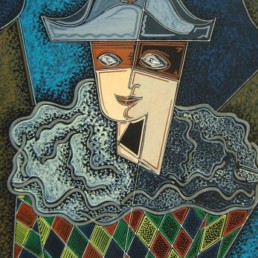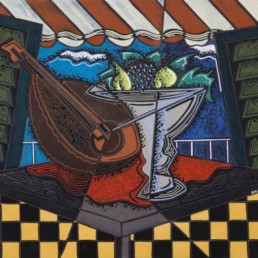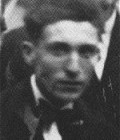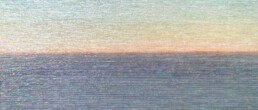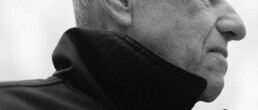Pippo Oriani
1909 (Turin) - 1972 (Rome)
Biography
Pippo Oriani was born in Turin in 1909. Pippo Oriani belonged to a family of leading manufacturers from Turin. He attends classes at the Superior School of Architecture.
In 1927, he becomes a regular of the “National Coffee” where he meets artists that provides him his first contacts with the Futurists, who are debating with the members of the “Group of Six” (post-impressionist). The art of Pippo Oriani is associated with the second generation of Italian Futurism. In 1928, Enrico Prampolini enables him to participate in the First Futurist Architecture Exhibition (Turin). In 1929, he exhibitis with the Futurists in Paris. In 1931 at the Pesaro Gallery (Milano) he participates in the Futurist exhibition of “aeropeinture” and scenography. Oriani becomes one of the most important members of Futurism (leader in 1936). He is now a famous painter, and also an architect and interior designer.
He often comes to Paris, to see his french friends – Zadkine, Cocteau, Léger, Max Ernst… – who take part to the Avant-Gardes : he s deeply influenced by Cubism. His style mainly mixes Futurism and Cubism to celebrate the spiritual dimension of Life, using very bright colors. He creates a real “Modern Figuration“. In 1930-31, Oriani is involved in the creation of “Speed“, a famous Futurist movie.
Oriani is very interested by Art critics and journalism : he was editor of the magazine “Citta Nuova” and wrote many articles abour futuristarchitecture.
During the War, he was against Fascism. He came back to his activity of painter in the 50’s.
Oriani uses collage and tar painting, wax, to create a dream world made of spheres and mineral fragments.
Pippo Oriani dies in a car accident in Rome in 1972. Many of his works are held in major museums and galleries of modern art in the world (Turin, Milan, Rome, Rotterdam, Philadelphia, Athens, Frankfurt, Zurich, Basel, Tokyo, Barcelona, Madrid, Rio de Janeiro, Sydney and Melbourne ).


